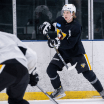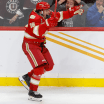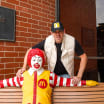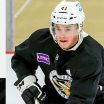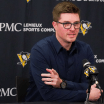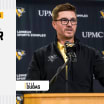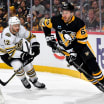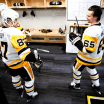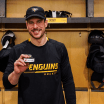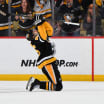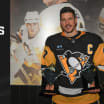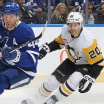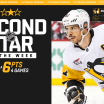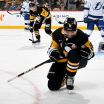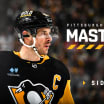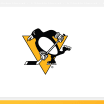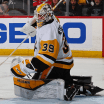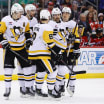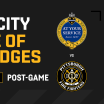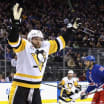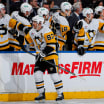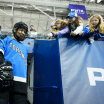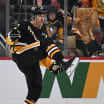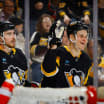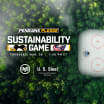In a typical offseason, Penguins players will take somewhere between 2-4 weeks off once the season ends. They start skating around the middle or end of July, ramp up their training going into August and plan to arrive back in Pittsburgh around the start of September.
"That's the normal offseason, which this obviously definitely was not," Penguins strength and conditioning coach Alexi Pianosi said with a laugh.
Training Through Restrictions and Uncertainty
Penguins strength and conditioning coach Alexi Pianosi explained how the players prepared for this season
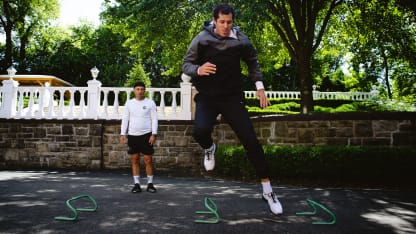
With the 2019-20 season ending back in August, Pianosi and fellow strength and conditioning coach Alex Trinca had quite the monumental task ahead of the 2020-21 campaign. They didn't know when it would start or what it would look like, which meant they had to help the players put together training regimens through an unusual and uncertain timeline while also dealing with COVID-19 restrictions.
It was a challenge that required a ton of phone calls, texts, FaceTimes and WebExes. But through that communication and creativity - along with a mindset of controlling the controllables - the players are back in Pittsburgh after five long months ready to go for training camp.
"At the end of the day, I think the most important thing was just staying in contact with our players while also making sure that we were ready to improvise and adapt to whatever the COVID restrictions were in their area throughout the offseason," Pianosi said. "That adaptability and flexibility was crucial."
As the players returned to their respective homes following Pittsburgh's elimination from playoff contention, the strength and conditioning coaches needed to get an understanding of what they did and did not have available to them.
"Are you working out at a home gym? Are you working out at a public gym? Does your trainer work out of a gym that you're still able to go to?" Pianosi said. "The hard part was that was different for a lot of guys."
When it came to home setups, a lot of heavy lifting was done when the NHL pressed pause last March. At that time, some players already had home gyms, while Pianosi and Trinca helped others order equipment, like dumbbells, bands and bikes. That meant the majority of players had decent setups at home by the time August rolled around.
But when it came to working out and skating at public places, the players had to navigate COVID-19 regulations that varied greatly by region. Europe, Canada and the United States all had different protocols at federal and local levels.
To stay up to date with those restrictions, Pianosi and Trinca split the roster in half between the two of them and communicated constantly with their assigned players while also making sure to keep each other in the loop.
"It wasn't like previous summers when guys have good well-established trainers and we can leave them and let them do their own thing a little bit more," Pianosi said. "This was something where you had to check in very regularly - what's the COVID status? What's your status? How's your health? How's your equipment setup? Are you still skating? Are you working on this? Are you working on that? So it ended up being a lot more communication than previous years for us."
The strength and conditioning coaches dealt with setbacks as they came. For example, if a player told them the public gym they were using was going to close for a week, Pianosi and Trinca would write an individualized program he could use over that time period with the resources available to him. They would also film videos of themselves doing the exercises for the player to look at as well.
"If the drills in the program are not executed well, then the player is not going to get the most out of themselves," Pianosi said. "So myself and Alex ended up basically hopping on FaceTimes or WebExes with the players. We would say, here's your new program, send videos of the first day."
The player would then set their phone up in the gym and film himself doing all of the exercises. He would then get on another call with his strength and conditioning coach for an evaluation of sorts.
"We'd say here, your back needs to be a little bit straighter," Pianosi said. "Here, you need to focus on driving that leg a little bit higher. That puts you in this good position, here's why. Access to quality coaching and having somebody be there with you to really guide you through the movements was something that not everybody had access to because of the restrictions. So we tried to do that as much as we could virtually."
Another obstacle was that moving target of a timeline. In July, the NHL was targeting a Dec. 1 start date for the 2020-21 season, which changed to Jan. 1 in October. It was important - especially early on - for the strength and conditioning coaches to be respectful of how difficult is to train at an elite level without an end goal in sight.
"As hard as it is to just do a workout physically, the mental aspect of what am I doing this workout for is almost harder," Pianosi said.
So after players would train anywhere between 2-4 weeks in a row, Pianosi and Trinca would tell them to take a long weekend off and rest for five days versus two days in order to get a short reset. Even though they couldn't travel anywhere, which is something Pianosi and Trinca would normally advise, they just wanted them to get away from the gym and the ice.
"Enjoy your time with your family, your kids, your girlfriend, your friends - whatever it is that you were allowed to do within the COVID protocols and restrictions," Pianosi said.
Once they started to get more clarity about when the season might actually start, the strength and conditioning coaches turned their focus to one of the goals they always have during the offseason - which is to have the players skating at a high level coming into training camp.
"The first day of camp is always filled with adrenaline and nerves, and everything ratchets up that day," Pianosi said. "So we like to tell the guys that if that jump between your summer skates and the first day of training camp is small, that's going to benefit you, because that jump is really big. And all of a sudden, if you're skating at a pace and a style that you haven't been doing all offseason, that's going to be much more challenging for you both physically and mentally."
Pianosi said for the most part, all players were able to get on the ice on a consistent basis and accomplish that goal of ramping up their skating. And he's been impressed with how the players have looked in the informal skates these past few weeks leading into training camp.
"They're looking great," Pianosi said. "The players are all looking really healthy. They're all looking really strong. They're looking like they've made the best of their situation. Building that mental resiliency and that ability to be flexible and adapt is something that the players did a really, really good job of. I think it's really going to help us this season because they've been adapting already for the past five, six, seven months."
Another positive of the situation is that it was a huge window of opportunity for some players - particularly the younger ones like John Marino, Marcus Pettersson and Jake Guentzel - to actually make strength and muscle gains.
That's difficult to do over the course of an 82-game schedule, plus exhibition games and playoffs. Putting on strength and muscle boils down to the idea of taking in more calories than they put out by exercising. But since they are burning so many calories with practices, morning skates, games and workouts, it's nearly impossible to eat the requisite number of calories they would need to gain weight.
That's easier to accomplish in the offseason, butwith the Penguins having made the postseason for 14 years in a row, that window - particularly for the veteran players - tends to be short.
"People like Evgeni and Sid have been involved with Olympics and World Championships and World Cups and stuff like that," Pianosi said. "So the idea of having this much time off to train is definitely foreign to these guys."
But this year, the Penguins have played just four games in a 10-month span, dating back to March until now. And all of the players, regardless of the time period they've been in the league, were able to advantage of that and focus on things they needed to work on. For example, Marino said he was able to work on his mobility.
"Some of these longer-term development items, like maybe it's getting a little bit bigger, getting a little bit stronger, working on the health of your hips or your low back or something like that - you get more time to devote for that," Pianosi said.
"And guys have come back in great shape. They're bigger, stronger. So it's going to be really exciting when we actually get underway here, because I give full credit to the guys. They've worked so hard under such difficult circumstances. And they look great."


